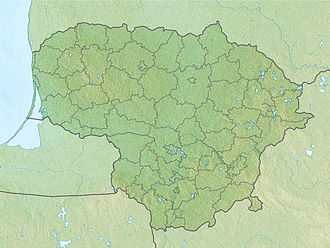Top Qs
Timeline
Chat
Perspective
Kulm law
From Wikipedia, the free encyclopedia
Remove ads
Kulm law, Culm law or Chełmno Law (German: Kulmer Recht; Latin: Jus Culmense vetus; Polish: Prawo chełmińskie) was a legal constitution for a municipal form of government used in several Central European cities in the Middle Ages and early modern period.

It was initiated on 28 December 1233 in the Monastic State of the Teutonic Knights by Grand Master Hermann von Salza and Hermann Balk when the towns of Toruń (Thorn) and Chełmno (Kulm) received German town law, in particular as a modification of Magdeburg rights. Named after the town it was signed in, the original document (Kulmer Handfeste) was lost in 1244 when the town hall burned due to an attack by Świętopełk II, Duke of Pomerania. The renewed charter of 1 October 1251 was based on a copy in Toruń, but the rights were reduced. The town hall in Chełmno was the seat of the higher court of Chełmno law until 1458.[1]
This type of law was mostly granted by the Teutonic Order to cities within their monastic state, and by the neighboring Duchy of Masovia, but also elsewhere in Poland and Lithuania. The law introduced a number of advantages for residents over Magdeburg rights, including the right to elect the local judge, and the right of inheritance by descendants of both genders.[2] From the 13th to the 18th century, at least 224 towns were vested with the law.[2] In addition, the Kulm law was expanded, independently from the Knights, to a larger set of laws called Alter Kulm.
During World War II the charter of 1251 was stolen by the German occupiers from the Old Town City Hall in Toruń, but was restored to Poland after the war.[3] It is held in the State Archive in Toruń since 1959.[3] It is listed on the Polish National List of the Memory of the World Register, which includes candidates for the international register.[3]
Remove ads
Cities and towns
Summarize
Perspective

Cities located under Chełmno Law are currently mostly located in northern and central Poland, in the regions of Dobrzyń Land, Krajna, Kuyavia, Masuria, Mazovia, Podlachia,[4] Pomerania, Powiśle, Warmia, with some in southern Poland (Lesser Poland), and in Lithuania and Russia (Kaliningrad Oblast). The largest are Polish capital Warsaw, major cities on the Vistula River Płock, Toruń and Grudziądz, major port cities of Gdańsk, Kaliningrad and Klaipėda, plus Olsztyn.


The historic centers of Toruń and Warsaw are listed as UNESCO World Heritage Sites,[5][6] with the historic centers of Chełmno,[7] Gdańsk[8] and Tykocin,[9] and major landmarks of Czerwińsk nad Wisłą,[10] Grudziądz,[11] Kwidzyn,[12] Lidzbark Warmiński,[13] Malbork,[14] Olsztyn,[15] Płock[16] and Pułtusk[17] additionally listed as Historic Monuments of Poland.





Cities include:
Cities and towns for which it was a replacement of a previous municipal charter in italics.
Remove ads
See also
References
Literature
Wikiwand - on
Seamless Wikipedia browsing. On steroids.
Remove ads


